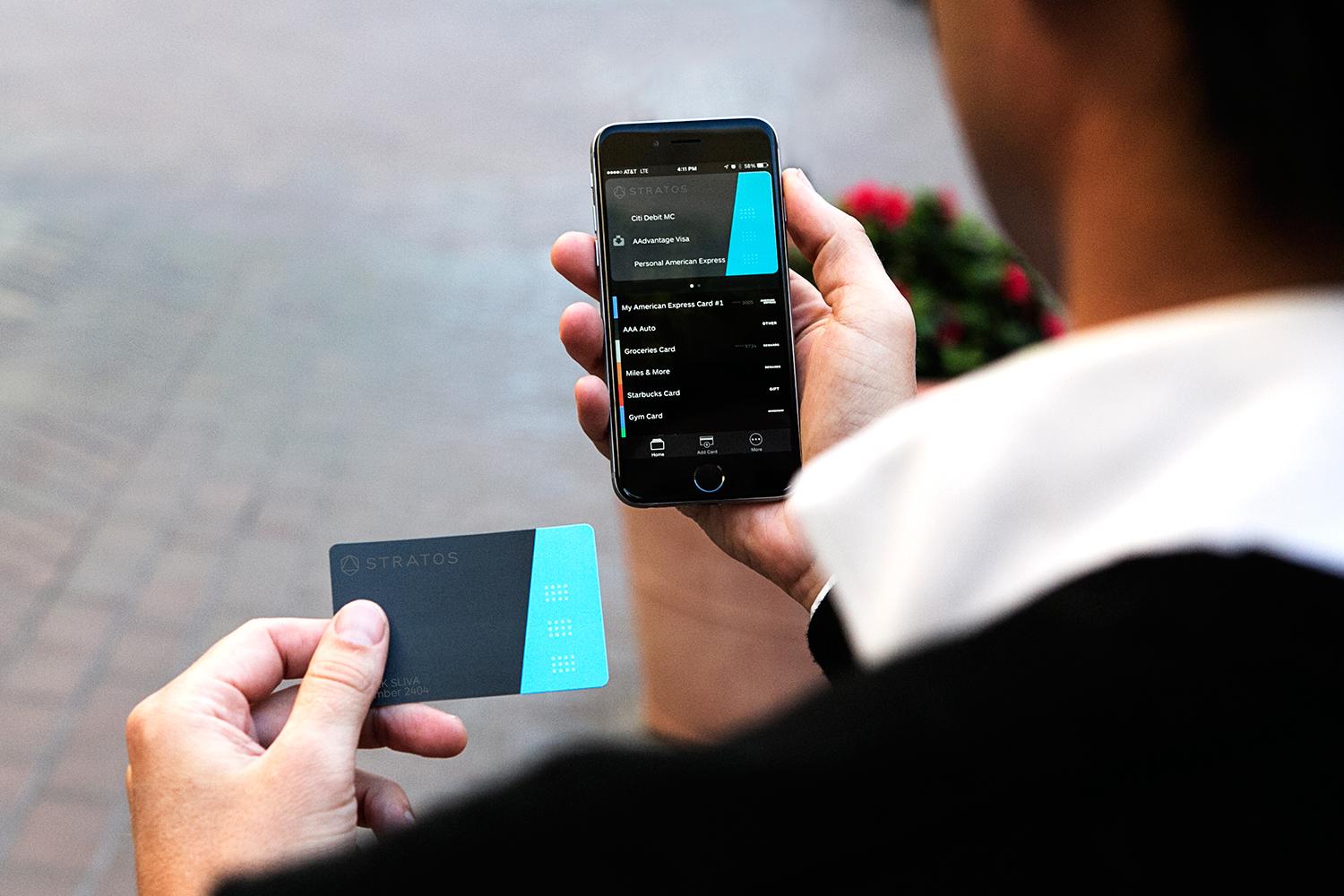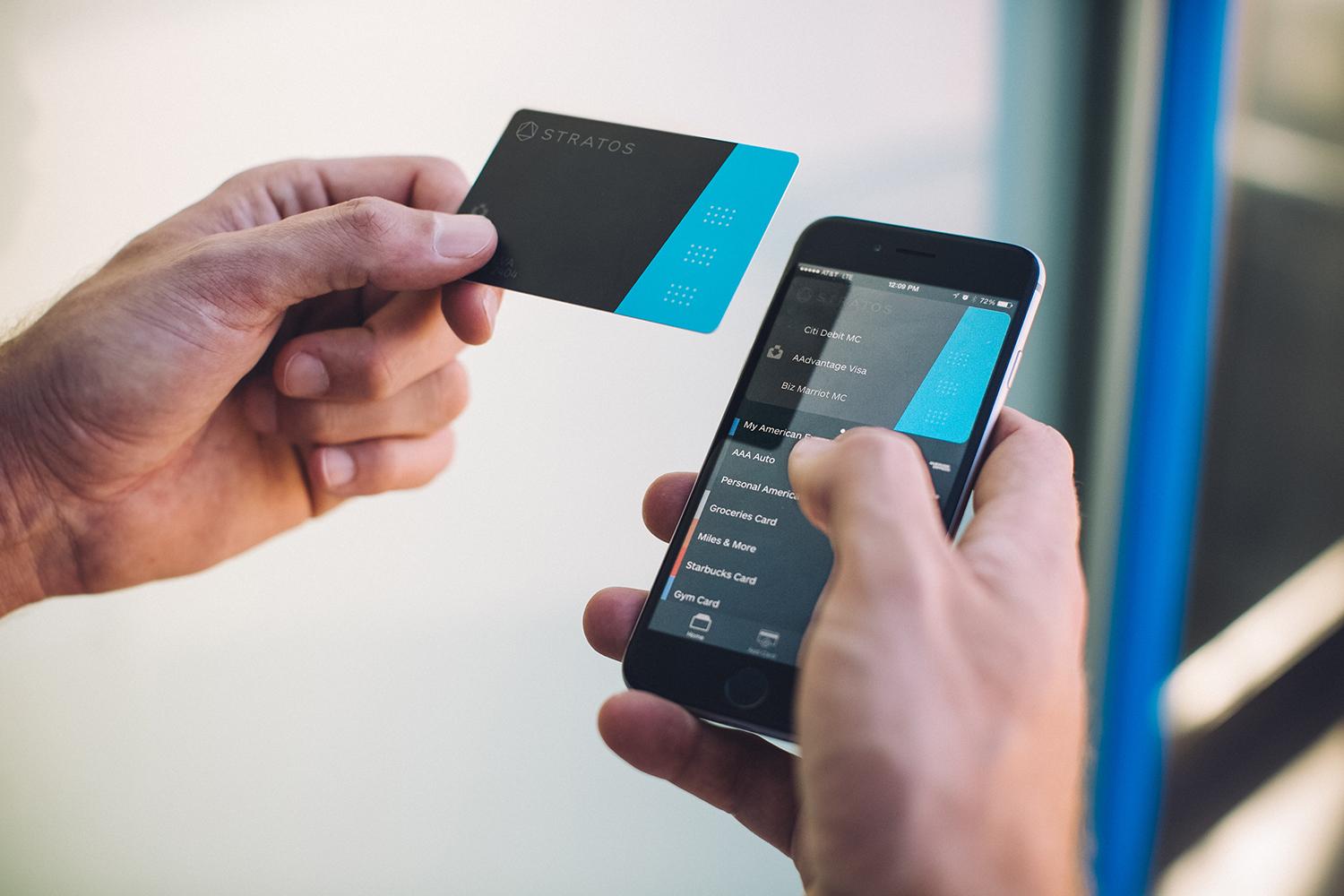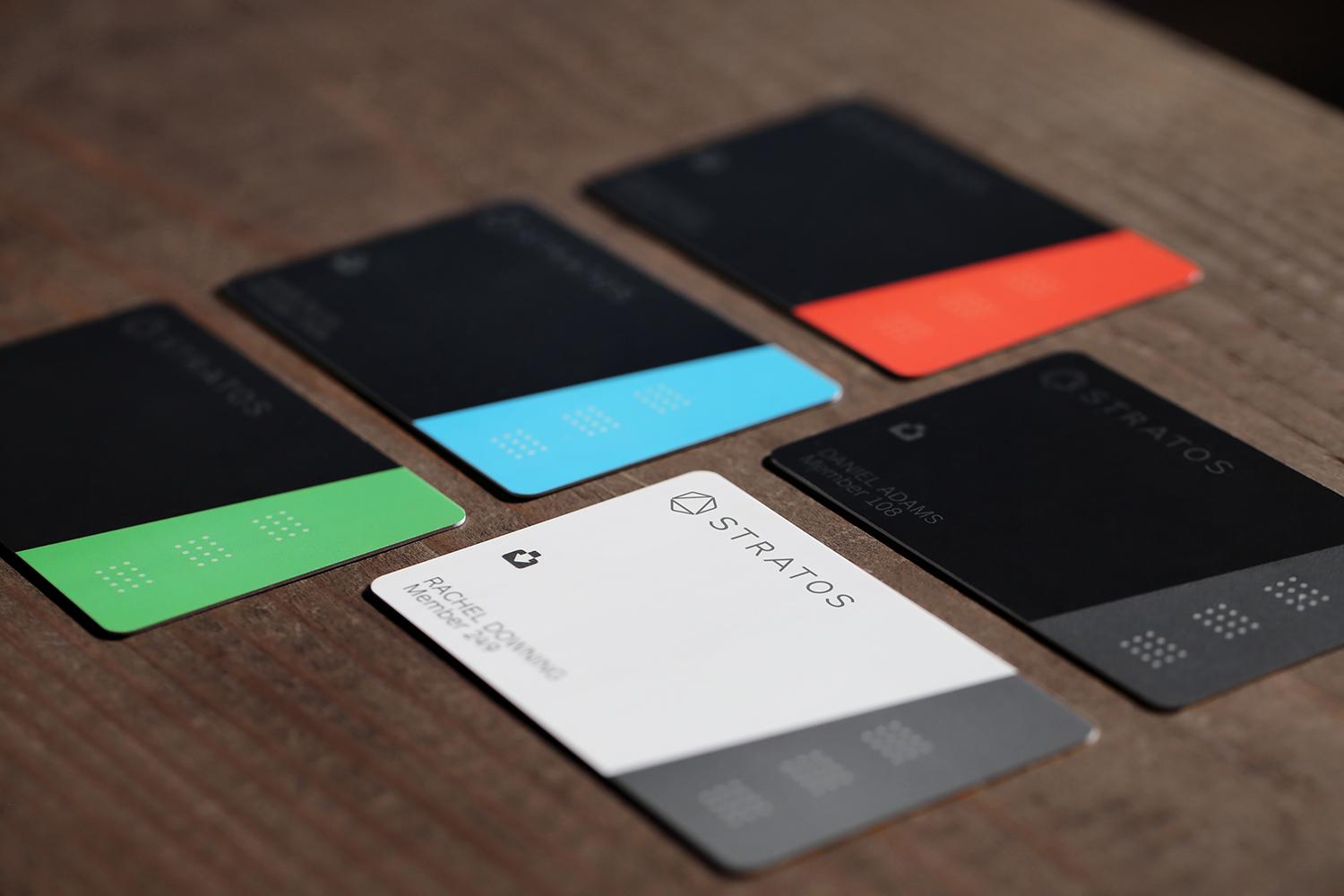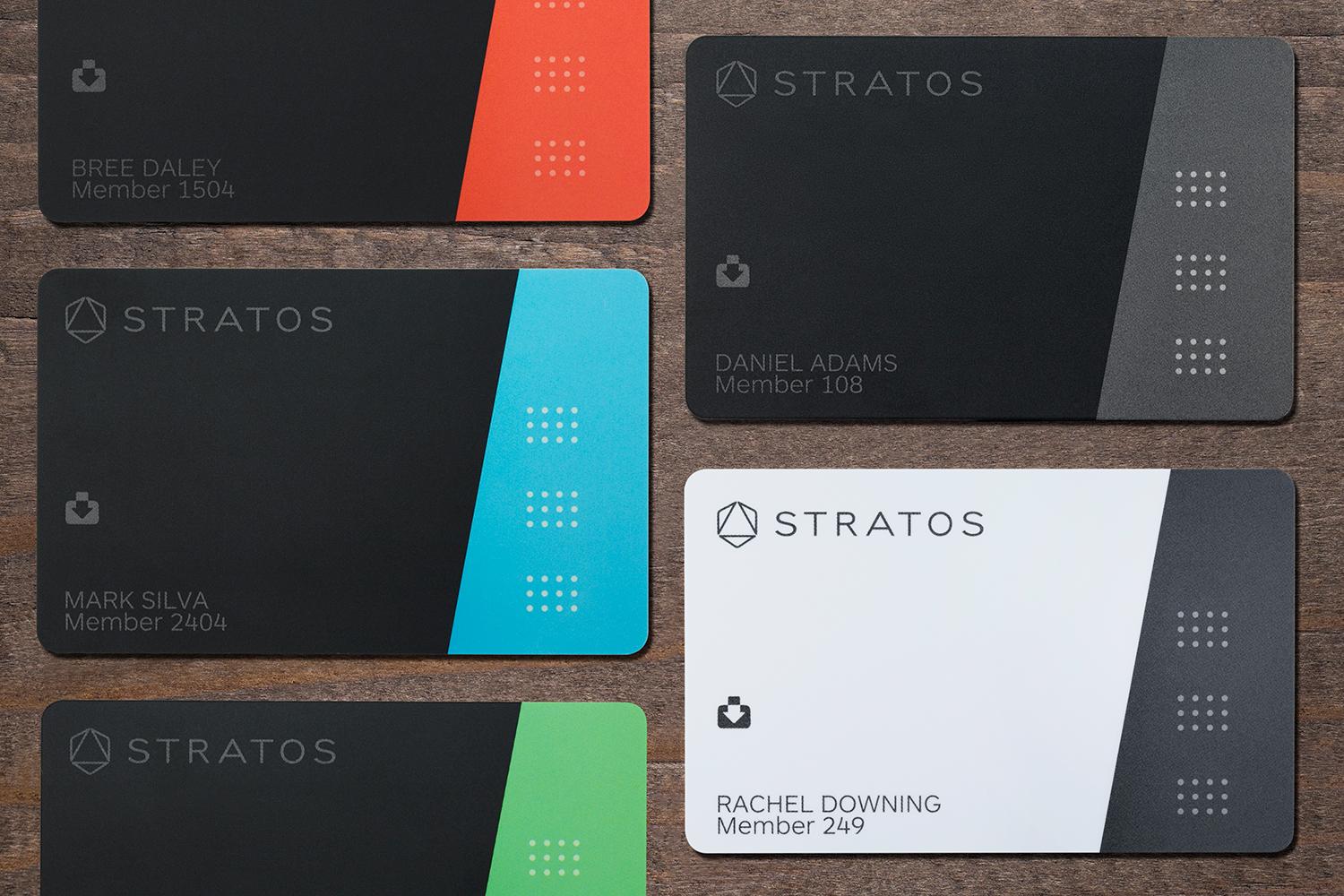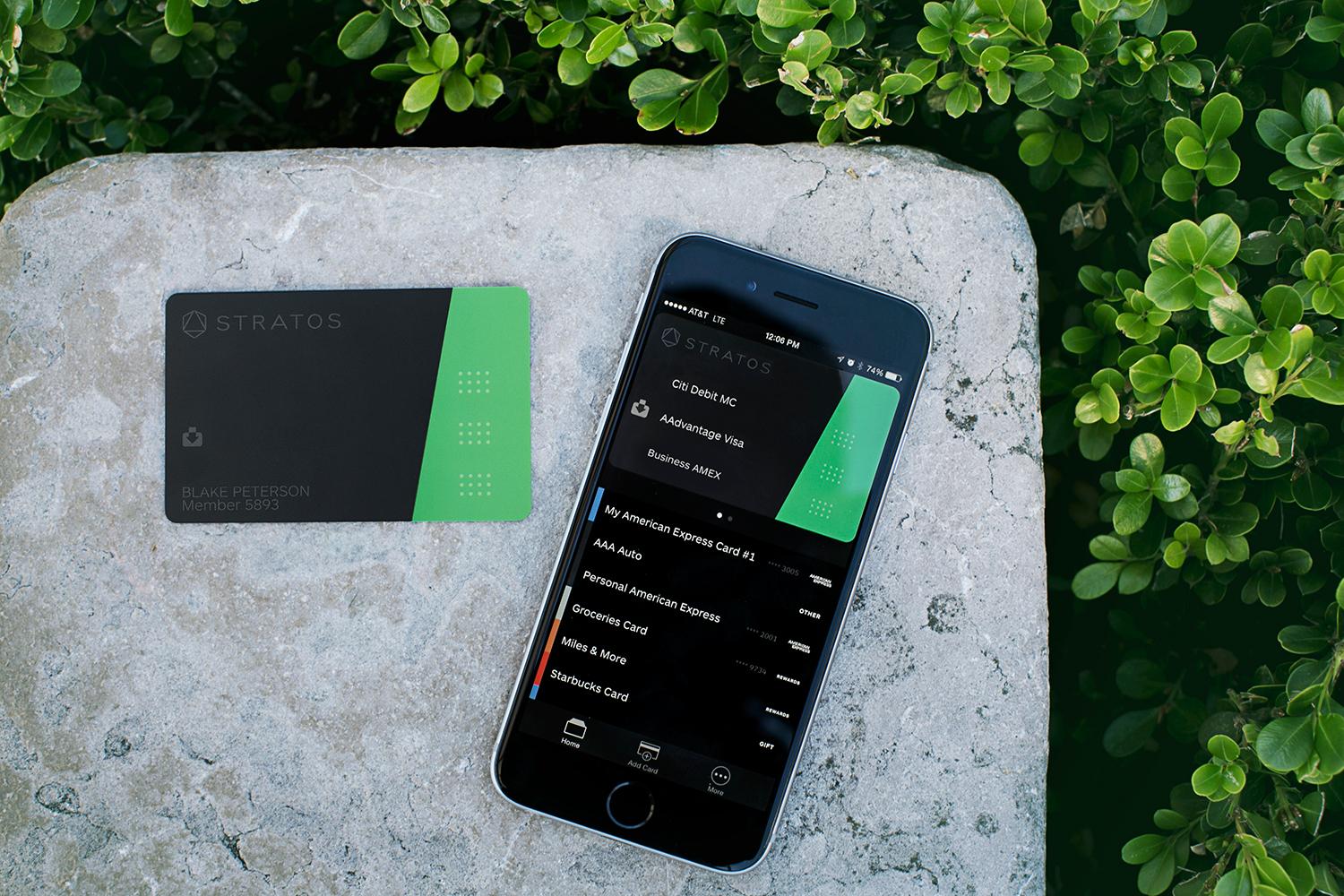Whacking your credit card against the counter every time you pay for something isn’t exactly natural, but it’s what you’ve got to do if you’re carrying the new Stratos smart card. Cashiers will give you quizzical looks and ask to see the card from time to time — especially if it doesn’t work, but hey, you’re riding the wave of the future. No one ever said it’d be easy.
Stratos looks slick, polished, and surprisingly normal.
Smart cards like Stratos are supposed to clear your wallet of cards completely, so you can walk around with all your accounts connected to one slim piece of plastic. Coin, Plastc, Swyp, and others all have their own versions of the same idea, but Stratos takes a novel approach to the idea. Since payment technology is rapidly improving, Stratos is a subscription-only card.
You shell out $95 a year for the privilege of carrying around a very high-tech credit card that you can turn in for an update the moment Stratos has it ready — free of charge. That way, your card always has the latest tech, and you’re not left out in the cold when the credit card companies move to Chip and PIN technology this fall. I’ve used the Stratos card for a few weeks now, and I’m not entirely sure it’s worth it — yet.
Slick look and easy setup
Stratos looks slick, polished, and surprisingly normal, considering that it’s chock full of components. It’s as slim as every other credit card because it has to fit through the same swiping mechanism on every cash register you come across during your day.
On the back, you’ll find not one, but two magstripes — which ensure that the card works at virtually any register — and a space to sign your name. And that’s it — there’s no card number, no CVV code for added security, and no chip for chip and PIN payments (yet). The absence of card numbers on the Stratos adds an element of security, as no hackers can snoop on your card number with hidden cameras.
Stratos prints your name and member number on the front of the card to add a sense of security and cache. This info goes where you’d normally see your name on a credit or debit card. The Stratos logo and name are positioned at the top, and there are three buttons on the right side where each of your primary cards are loaded.
You have to rap the card against a table twice to select the account you want to use. Then, a trio of LEDs light up, and you press the button that corresponds to the correct account. Otherwise, you’ll pay with your primary card. It’s a relatively simple design that’s meant to blend in, and it works. No one questioned that the Stratos was a real credit card — unless it didn’t work, which occasionally happened.
I tapped the card to wake it and swiped it without incident.
Setting it up was as easy as downloading the app, signing in, plugging the card reader into the headphone jack, and swiping my cards through it. Stratos also supports some loyalty rewards cards, which is quite handy. As you add cards, you’ll need to verify the CVV number and expiration date to prove that it’s actually your card. The app then hides that sensitive info, showing only the last four digits of your card and the expiration date. If you want to see your CVV, you’ll have to enter your password or use Touch ID to unlock the card in the app. That added layer of security feels reassuring, as does the bank level encryption, which never reveals your credit card number to anyone.
Overall, setting up the Stratos card was only slightly more complicated than adding cards to Apple Pay, which allows you to add cards by simply snapping a picture — no card reader necessary.
Tap then pay is awesome — until it’s a hassle
Setting up the Stratos card was the least awkward part of the experience. Actually using it wasn’t as smooth. The first time I tried to use it, the card failed. Luckily, the line at Panera Bread was short, so I gave the card another good whack on the counter and tried swiping it again. “It didn’t go through,” the cashier said, looking curiously at the card. “Sometimes it works if I swipe it here.” She smiled and extended her hand for the card. I was kind of worried she’d think I was some kind of criminal if I handed her my weird card and it still didn’t work, so I did what most do when a card’s declined:
“It’s all right,” I said, pulling out my old-fashioned debit card. “I’ll just use this one.”
The next trial run was much smoother. I tapped the card to wake it and swiped it without incident. Every other time I used the card, it worked like a dream. I took out cash at ATMs, bought groceries at the market, and purchased a dozen other small things just for the thrill of seeing it work. I even switched between various cards for the fun of it.
However, there were times when I just didn’t want to deal with tapping Stratos on the counter, or worrying over the mechanics of how a hand off to waiter works. When you live in New York, people are in a Hurry with a capital H. You can’t spend time tapping your card multiple times before it works. That’s like being the sweet old lady counting out exact change when the line’s out the door. Or that person who still writes checks at the grocery store. New Yorkers won’t stand for it. Sometimes it was just easier to pull out my old standby, which always works.
It’s the same problem Apple Pay, Coin, and any other alternative payment method faces right now. We need payments to just work quickly and reliably — no shenanigans. That said, if any alternative credit card has a chance, it’s Stratos, because the company won’t stop with version 1.0. The Michigan-based company is on a mission to constantly update and improve its technology.
Security upgrades will improve the experience
The Stratos card isn’t seamless, and it isn’t perfect, but it could be in the future. One day, Stratos’ cards will have Chip and PIN, NFC, and even fingerprint sensors for added security. They’ll be infinitely more secure than any credit card on the market (unless banks start doing the same), and they’ll work anywhere, no matter how you use them. At least, that’s the plan.
Stratos is subscription-based so that it can offer you the latest technology, as it comes to the market. It may sound entirely absurd to pay $95 a year for a credit card, and right now, it is. The Stratos card isn’t seamless enough to cost you the same as a Netflix subscription every month unless you’ve got about 17 credit cards, and even then, it’s not entirely practical.
Cut that price in half, and more people might consider it, but even then, it’s a tough sell. Most debit and credit cards are free from your bank, so why pay for something you can get for free? Stratos answers that security and convenience are worth the price. The security argument is valid, but the convenience factor just isn’t there yet. Until it is, your average Joe isn’t going to pay for the luxury of the Stratos card.
The good news is, Stratos has room for improvement. If the company adds all the security features it promises and streamlines the user a experience a little bit more (no more tapping, please), it’ll have a truly competitive smart card.
